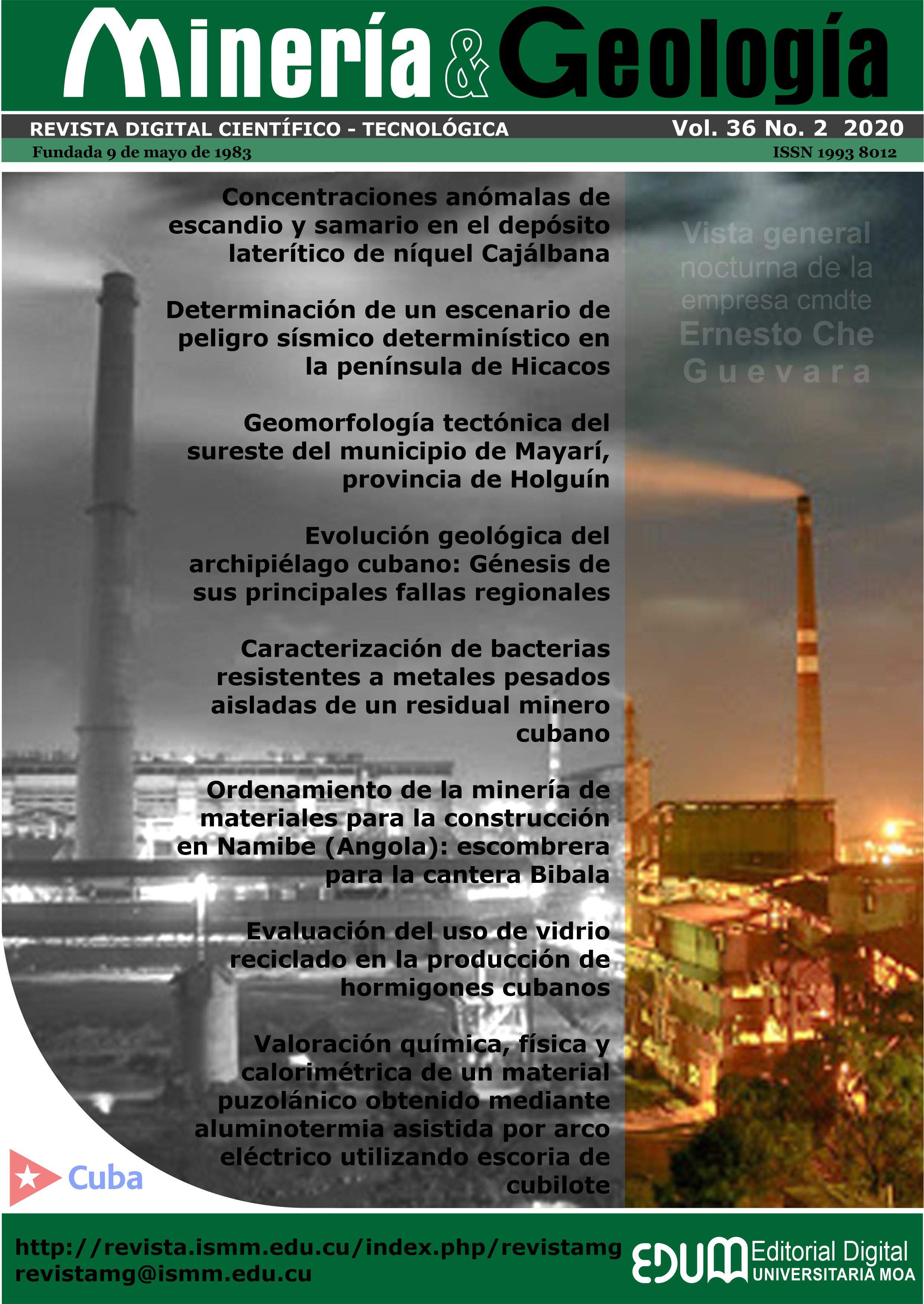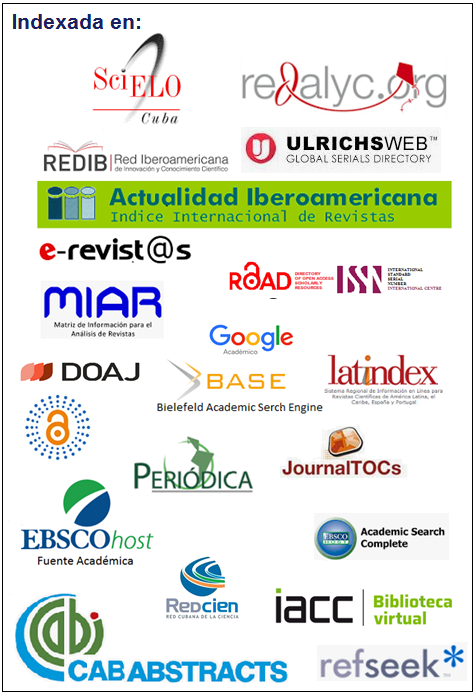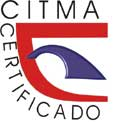Evolución geológica del archipiélago cubano: Génesis de sus principales fallas regionales
Palabras clave:
ciclo de Wilson, contextos geotectónicos, asociaciones petrotectónicas, evolución geológica de Cuba, fallas regionales cubanas.Resumen
Se propone un modelo de evolución geológica del archipiélago cubano con el objetivo de explicar los principales contextos geotectónicos y edades en que se originaron las principales fallas regionales capaces de generar terremotos en la actualidad, atendiendo a que este fenómeno no parece solucionado en su totalidad en los diferentes modelos geológicos consultados. El trabajo se fundamentó en la valoración de las asociaciones petrotectónicas del archipiélago cubano, identificadas con base en las características estratigráficas de las unidades litoestratigráficas y litodémicas descritas en los levantamientos geológicos locales y regionales, reflejadas en los mapas geológicos y reglamentadas en el Léxico Estratigráfico Cubano del 2013; así como en su correspondencia con los contextos geotectónicos, asociaciones petrotectónicas, etapas y estadios establecidos en el ciclo de Wilson.Descargas
Citas
Arango, E. D.; Vega, N.; Cuevas, J. L.; Alcaide, J. y Rios, Y. 2018: Memorias del taller conclusivo para el análisis y actualización de las zonas de fallas activas y la dinámica de los bloques del archipiélago cubano. Reporte de investigación. Fondos del CENAIS Santiago de Cuba.
Arango, E. D. 2000: Geodinámica del sistema de fallas transformante Bartlett–Caimán, al sur de Cuba Oriental. En: Chuy, T. J. (Editor). Red de estaciones e investigaciones sismológicas en Cuba. La Habana: Editorial Academia.
Cobiella, J. L. 2008: Reconstrucción palinspástica del paleomargen mesozoico de la América del Norte en Cuba occidental y el sudeste del Golfo de México. Implicaciones para la evolución del SE del Golfo de México. Revista Mexicana de Ciencias Geológicas, 25(3): 382-401.
Cobiella, J. L. 2009: Emplacement of the northern ophiolites of Cuba and the Campanian-Eocene geological history of the northwestern Caribbean-SE Gulf of Mexico region. En: James, K. H.; Lorente, M. A.; Y Pindell, J. L. (Editores). The Origin and Evolution of the Caribbean Plate. London: Geological Society, Special Publications. 328 p.
Condie, K. C. 2003: Plate tectonics and crustal evolution. Great Britain: Butterworth-Heinemann publications. 282 p.
Draper, G. y Barros, J. A. 1994: Cuba. In: Donovan, S. K. and Jackson, T. A. (Editors). Caribbean Geology, Introduction. Kingston: U.W.I. Publishers' Association. P. 65-86.
Fichter, L. S. y David, J. P. 2001: Ancient Environments and the Interpretation of Geologic History. 3rd ed. New Jersey: Prentice Hall. 280 p.
Fichter, L. S. y Whitmeyer, S. J. 2019: No Rock Is Accidental. Stratigraphy, Structure, and Tectonics in the Wilson Cycle. In: Billi, A. and Fagereng, A. Problems and Solutions in Structural Geology and Tectonics. Amsterdam: Elsevier. Vol. 5: 145-160.
Giunta, G.; Beccaluva, L. y Siena, F. 2006: Caribbean Plate margin evolution, constraints and current problems. Geologica Acta, 4(1-2): 265-277.
Instituto de Geologia y Paleontologia (IGP). 2013: Léxico Estratigráfico de Cuba. La Habana: Editorial Centro Nacional de Información Geológica, Servicio Geológico de Cuba. 458 p.
Instituto de Geologia y Paleontologia (IGP). 2016: Mapa Geológico de la República de Cuba. La Habana: Servicio Geológico de Cuba.
Iturralde, M. 1975: Problems of the aplication of two modern tectonic hypothesis to Cuba and the Caribbean region. AAPG Bull., 59(5): 838-855.
Iturralde, M. 1981: Nuevo modelo interpretativo de la evolución geológica de Cuba. Revista Ciencias de la Tierra y del Espacio, 3: 51-90.
Iturralde, M. 1988: Naturaleza Geológica de Cuba. La Habana: Editorial Científico-Técnica. 246 p.
Iturralde, M. 1994: Cuban Geology. A new plate tectonic synthesis. Journal of Petroleum Geology, 17(1): 39-70.
Iturralde, M. 1996: Geología de las ofiolitas de Cuba. En: Ofiolitas y arcos volcánicos de Cuba. First Contribution IGCP Project 364, p. 83-120.
Iturralde, M. 1998: Sinopsis de la constitución geológica de Cuba. Acta Geológica Hispánica, 33(1-4): 9-59.
Iturralde, M. 2004: Principales modelos tectónicos del Caribe. En: Origen y evolución del Caribe y sus biotas marinas y terrestres. La Habana: Editorial Centro Nacional de Información Geológica. ISBN: 959-7117-14-2.
Iturralde, M.; García, A.; Rojas, Y.; Proenza, J. A.; Murphy, J. B. and Stern, R. J. 2016: The geology of Cuba. A brief overview and synthesis. GSA Today, 26(10): 4-10.
Khudoley, K. M. 1967: Principal features of Cuban geology. American Association of Petroleum Geologists Bulletin, 51(5): 668-677.
Khudoley, K. M. and Meyerhoff, A. A. 1971: Paleogeography and Geological History of Greater Antilles. Colorado, USA: Geological Society of America. Memoir 129. 188 p.
Knipper, A. y Cabrera, R. 1974: Tectónica y geología histórica de la zona de articulación entre el mio- y eugeosinclinal de Cuba y del cinturón hiperbásico de Cuba. En: Contribución a la Geología de Cuba. Publicación Especial Número 2: 15-77. La Habana: Instituto de Geología y Paleontología, Academia de Ciencias de Cuba.
Lawver, L. A.; Dalziel, I. W. D.; Norton, I. O.; Gahagan, L. M. and Davis, J. 2015: The PLATES 2014. Atlas of Plate Reconstructions (550 Ma to Present Day). PLATES Progress Report No. 374-0215. University of Texas, Institute for Geophysics Technical. Report No. 201. 220 p.
Lewis, J. F. y Draper, G. 1990: Geology and tectonic evolution of northern Caribbean margin. In: Dengo, G.; Case, J. (Editors). The Caribbean Region, The Geology of North America. Volume H: 77-140. Geological Society of America, Inc.
Mann, P.; Taylor, F. W.; Lawrence, E. and Lung, T. 1995: Actively evolving microplate formation by oblique collision and sideways motion along strike-slip faults. An example from the northeastern Caribbean plate margin. Tectonophysics, 246(1-3): 1-69.
Miall, A. D. 2000: Principles of Sedimentary Basin Analysis. Third Ed. Berlin Heidelberg New York: Springer-Verlag. 616 p.
Millán, G. 1997: Posición estratigráfica de las metamorfitas cubanas. En: Furrazola, G. F.; Nuñez, K. E. (Editores). Estudios sobre Geología de Cuba. La Habana: Centro Nacional de Información Geológica, Instituto de Geología y Paleontología. P. 251-258.
Puscharovski, Y. M.; Mossakovski, A. A.; Nekrasov, G. E.; Sokolov, S. D.; Iturralde, M.; Cabrera, R.; Oro, J.; Flores, R. and Formell, F. 1989: Tectónica de la República de Cuba. Texto explicativo del mapa tectónico de Cuba a escala 1,500 000. Moscú: Nauka. 76 p.
Shein, V. S.; Kleschov, K. A.; Yparraquirre, J. L.; Garcia, E.; Lopez-Rivera, J. G.; Socorro, R. y López, J. O. 1985: Mapa tectónico de Cuba, escala 1: 500 000. Tecnológica, 15(1): 37-40.
Turcotte D. and Schubert G. 2018: Geodynamics. 3rd ed. Los Ángeles: Cambridge University Press. 623 p.
Whitmeyer, S. J.; Fichter, L. S. y Pyle, E. J. 2007: New directions in Wilson Cycle concepts, Supercontinent and Tectonic Rock Cycles. Geosphere, 3(6): 511–526.
Publicado
Cómo citar
Número
Sección
Los autores que publican en esta revista están de acuerdo con los siguientes términos:
- Licencia Creative Commons Atribución-NoComercial permite que el beneficiario de la licencia tenga el derecho de copiar, distribuir, exhibir y representar la obra y hacer obras derivadas para fines no comerciales siempre y cuando reconozca y cite la obra de la forma especificada por el autor o el licenciante.
- Los autores pueden establecer por separado acuerdos adicionales para la distribución no exclusiva de la versión de la obra publicada en la revista (por ejemplo, situarlo en un repositorio institucional o publicarlo en un libro), con un reconocimiento de su publicación inicial en esta revista.
- Se permite y se anima a los autores a difundir sus trabajos electrónicamente (por ejemplo, en repositorios institucionales o en su propio sitio web) antes y durante el proceso de envío, ya que puede dar lugar a intercambios productivos, así como a una citación más temprana y mayor de los trabajos publicados (Véase The Effect of Open Access) (en inglés).
- Lo anterior debe realizarse siempre sobre el artículo ya publicado por Minería y Geología.
La revista permite que los autores tengan los derechos de autor sin restricciones
La revista permite que los autores conserven los derechos de publicación sin restricciones




